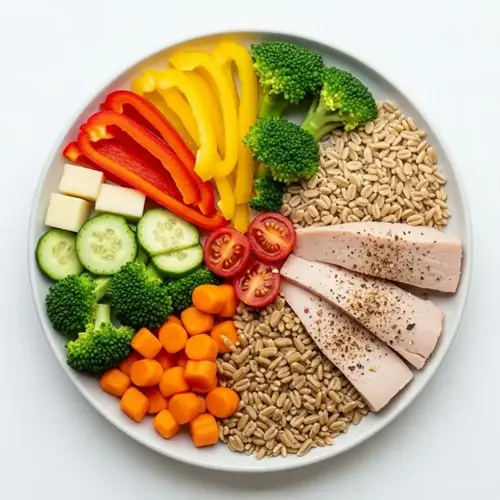What's the optimal sodium to potassium ratio?

Written by
Natalie Hamilton
Reviewed by
Prof. Benjamin Murphy, Ph.D.Your body's optimal sodium potassium ratio must be correct for good health. This perfect balance establishes the nerve signals and control of muscle movements. It keeps the fluids in ideal harmony. If this balance is incorrect, you will experience fatigue and health problems. The scientific proof of the gold standard ratio is 1:3.
Nerve Signal Optimization
- Sodium triggers electrical impulses for communication
- Potassium resets nerve cells after firing
- The 1:3 ratio maintains signal precision
Fluid Balance Regulation
- Sodium holds water in bloodstream
- Potassium balances intracellular fluids
- Correct ratio prevents swelling or dehydration
Cardiovascular Protection
- Potassium relaxes blood vessel walls
- Sodium moderation prevents pressure spikes
- Combined effect reduces heart disease risk
Easily calculate your personal ratio by dividing your daily sodium intake by potassium intake. If you consume 1,500mg of sodium, you need to consume 4,500mg of potassium daily. Track both numbers when using nutrition apps. This simple math provides you with your current electrolyte balance status.
Reaching the ratio improves your well-being. Aim for three servings of potassium-rich foods, such as bananas, spinach, or beans, daily. Reduce your intake of processed foods that are high in sodium. You will see your blood pressure go down in just a few weeks.
Many people consume sodium-heavy diets. Many people eat a sodium-heavy diet, with 1:1 being the average rather than 1:3. This imbalance can compromise your cardiovascular system. If you correct it, you can ultimately avoid problems down the road. I help my patients by easily swapping foods to help them normalize the ratios.
Start today by looking at nutrition labels. Compare sodium and potassium. Add one potassium-rich food to every meal. Your nerves, muscles, and heart will all appreciate you maintaining the balance of this essential nutrient.
Read the full article: Sodium Potassium Balance: Essential Health Guide

